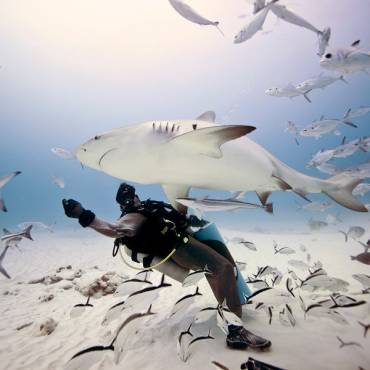Cenotes
 A cenote (from the maya dzonoot: ‘hole with water’) is a flooded sinkhole of karstic origin. There are several types of cenotes: open, semi-open and underground or in a cave. This classification is directly related to the age of the cenote, being the mature cenotes those that are completely open and the youngest those that still preserve their intact dome. Like many other geomorphological structures, the cenotes are transitory structures, which can finally end up filled and dried, becoming part of what is known as a paleokarst.
A cenote (from the maya dzonoot: ‘hole with water’) is a flooded sinkhole of karstic origin. There are several types of cenotes: open, semi-open and underground or in a cave. This classification is directly related to the age of the cenote, being the mature cenotes those that are completely open and the youngest those that still preserve their intact dome. Like many other geomorphological structures, the cenotes are transitory structures, which can finally end up filled and dried, becoming part of what is known as a paleokarst.
Speleology has shown in the Yucatan peninsula the existence of interconnections between the cenotes and between these and the sea, evidencing a true system of underground drainage.
The cenotes are typical geomorphological structures of the limestone platforms of the Yucatan peninsula and the Florida peninsula. There are also cenotes in different parts of the world although they often receive different names. This is the case of the plains of Nullarbor, north of the Great Australian Bay and, also in the Bahamas, where they are known as blue holes or blue holes. In the state of Yucatan, where the cenotes have been exploited, it is estimated that there are more than 2,400 formations of this type and there is a whole program to inventory them, preserve them and make them available to visitors whose number increases every day.
Etymologically, as already noted, the word cenote -with which a natural well is designated in limestone, formed by the collapse of the roof of one or more caverns comes from the Mayan voice dz’onot, tzonot or Ts’ono’ot (masculine noun) which means «cavern with water». Both the word dzonot and the apócope dzon are present in the names of many populations of the region such as Dzoncauich, San Francisco Dzon, Chikindzonot, Kancabdzonot, Yokdzonot and Dzonot Carretero.
In some cenotes the Mayans made ritual human sacrifices; the experts have corroborated through a process of analysis of the bones (osteotafonómico), that the majority of the remains found by archaeologists and divers belonged to children under 11 years and to adult males. Generally, in this type of remains are ritual marks such as cuts to dismantle or discard, burned bones and skinning marks.
Some time ago it was discovered that the cenote “Pochote” or “Che-Há” has in its vicinity a series of Mayan petroglyphs.
The post Interesting facts about the cenotes appeared first on Phantom Divers.





